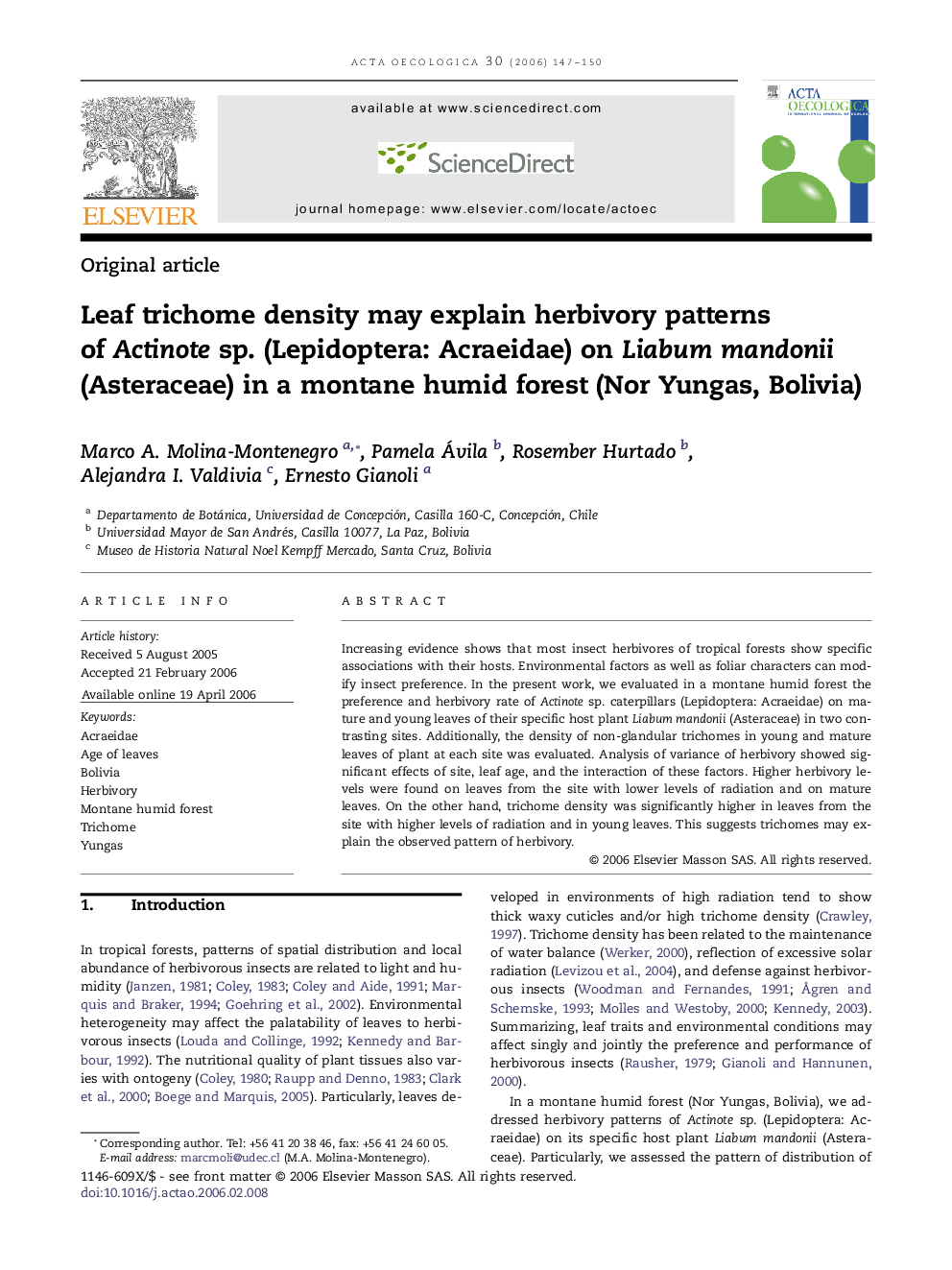| Article ID | Journal | Published Year | Pages | File Type |
|---|---|---|---|---|
| 4381631 | Acta Oecologica | 2006 | 4 Pages |
Increasing evidence shows that most insect herbivores of tropical forests show specific associations with their hosts. Environmental factors as well as foliar characters can modify insect preference. In the present work, we evaluated in a montane humid forest the preference and herbivory rate of Actinote sp. caterpillars (Lepidoptera: Acraeidae) on mature and young leaves of their specific host plant Liabum mandonii (Asteraceae) in two contrasting sites. Additionally, the density of non-glandular trichomes in young and mature leaves of plant at each site was evaluated. Analysis of variance of herbivory showed significant effects of site, leaf age, and the interaction of these factors. Higher herbivory levels were found on leaves from the site with lower levels of radiation and on mature leaves. On the other hand, trichome density was significantly higher in leaves from the site with higher levels of radiation and in young leaves. This suggests trichomes may explain the observed pattern of herbivory.
